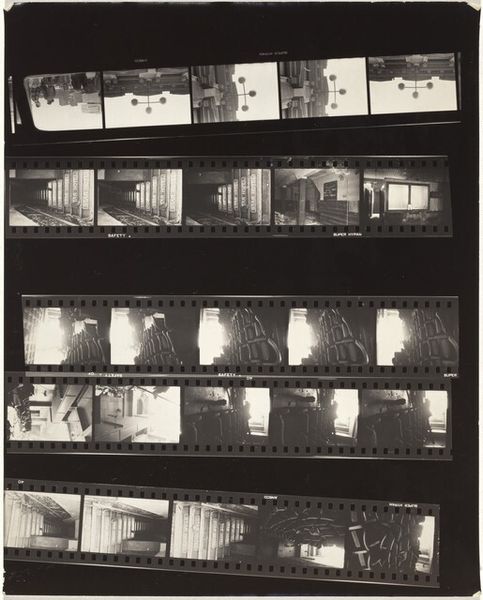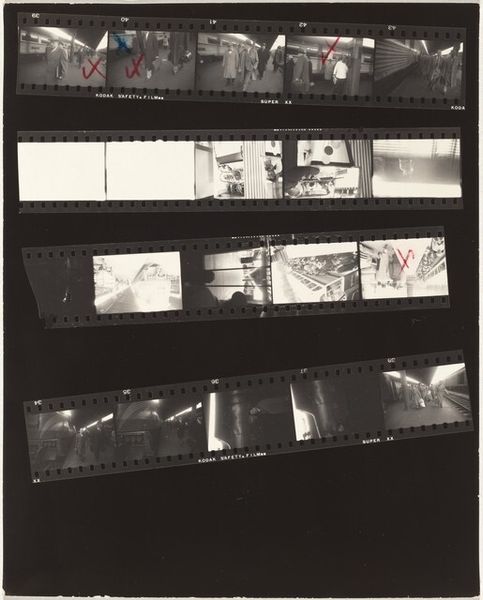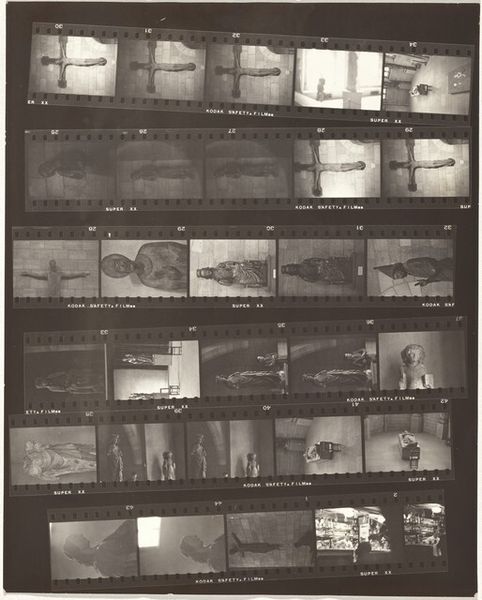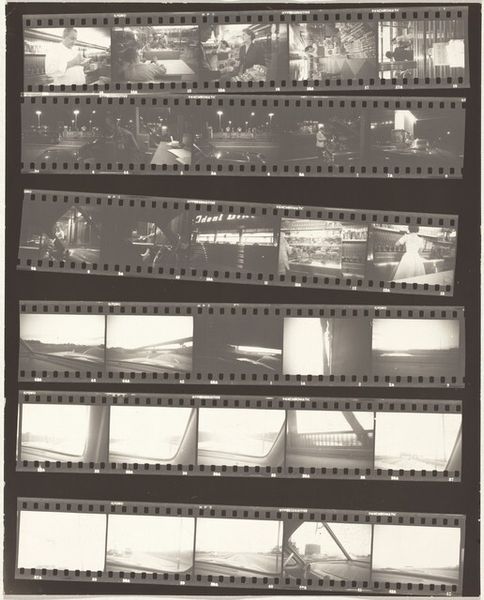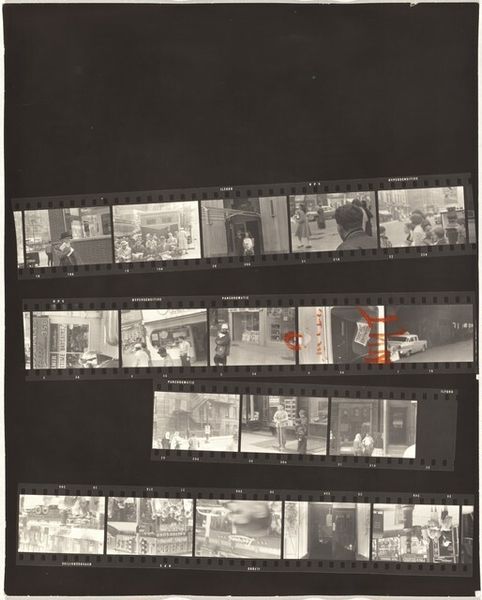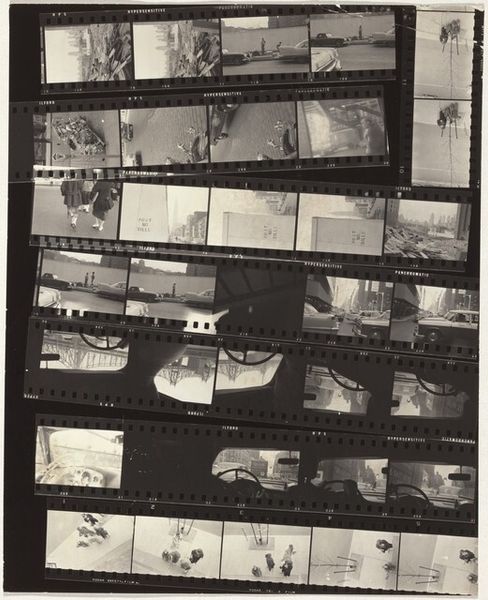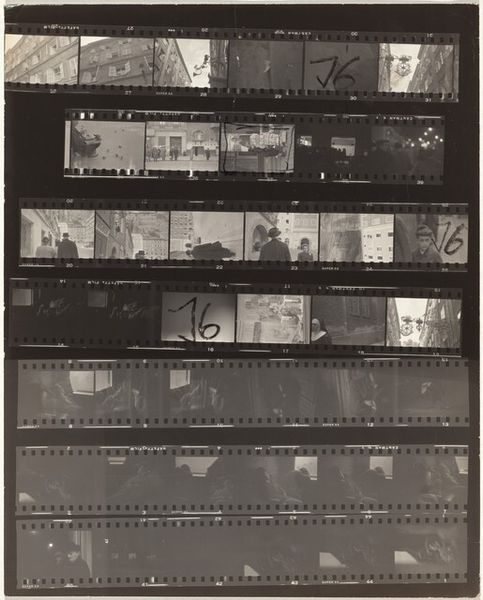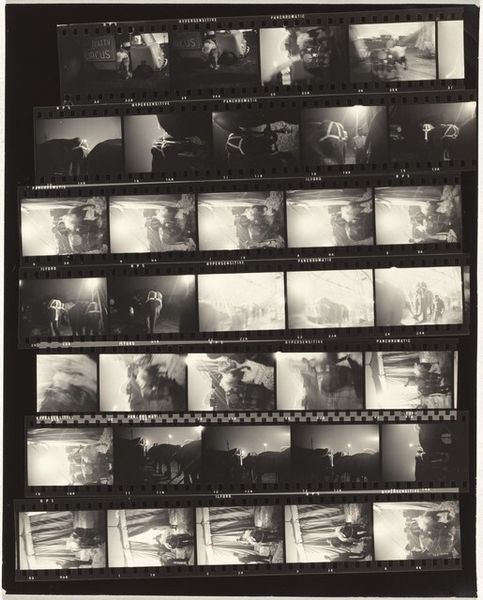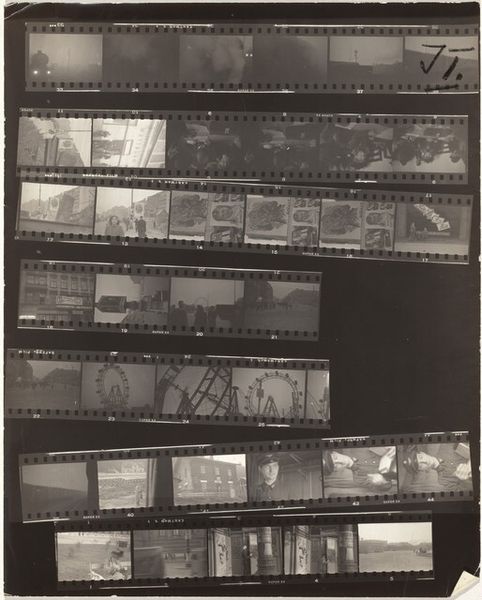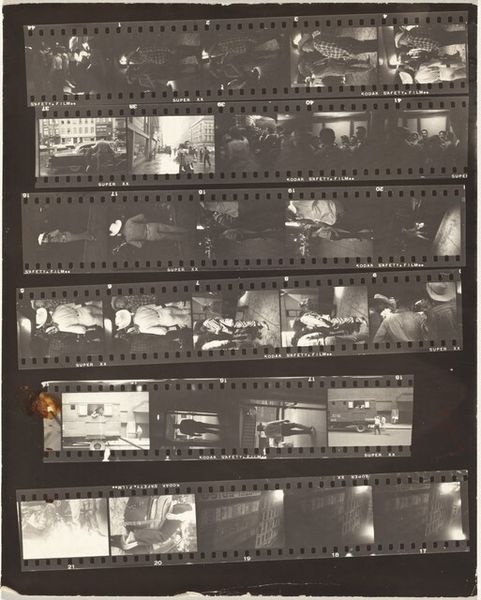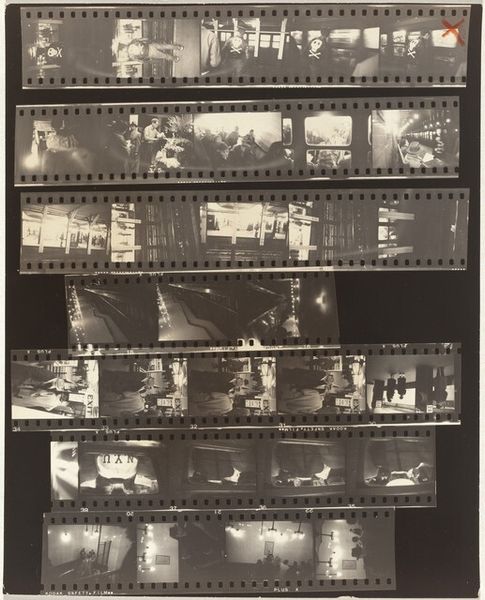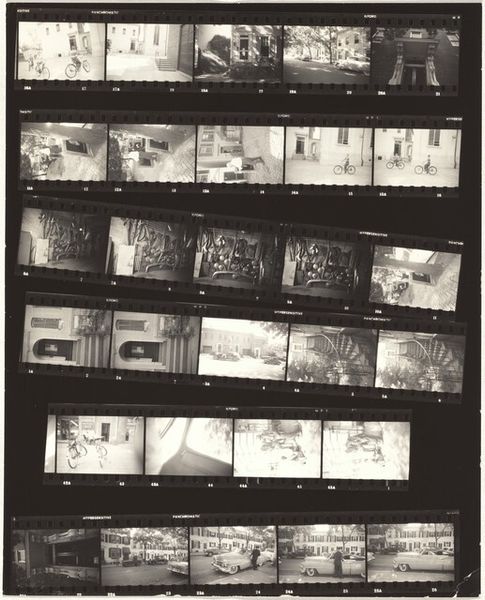
photography, gelatin-silver-print
#
landscape
#
street-photography
#
photography
#
gelatin-silver-print
#
monochrome photography
#
cityscape
#
modernism
#
realism
#
monochrome
Dimensions: sheet: 25.2 x 20.2 cm (9 15/16 x 7 15/16 in.)
Copyright: National Gallery of Art: CC0 1.0
Editor: Here we have Robert Frank's "Wall Street--New York City no number," a gelatin-silver print from 1954. It strikes me as a raw, almost cinematic depiction of urban life, especially shown as a filmstrip of potential images. How do you interpret this work? Curator: Well, it's more than just raw; it's a deliberate commentary. Frank's work, especially within the context of the 1950s, challenges the idealized image of American prosperity. Look at the figures in the frame. How does he present them, particularly in relation to the imposing architecture? Editor: I see them as small, almost ant-like, dwarfed by the buildings. It feels like a critique of the individual's power within a capitalist society. Curator: Precisely. Consider the social and political climate of the time. The rise of corporate power, Cold War anxieties. Frank isn't simply documenting; he's positioning the individual against these forces, highlighting a sense of alienation. How do you think his choice of black and white film contributes to this? Editor: It intensifies the feeling, doesn’t it? Stripping away color gives it a stark, almost bleak quality, further emphasizing the disparities and perhaps hinting at a loss of individuality. Curator: Exactly. The high contrast emphasizes the shadows and light, symbolizing the hidden inequalities beneath the glossy surface of postwar America. What statement do you think he makes in depicting Wall Street specifically? Editor: It becomes a symbol, not just of financial power, but perhaps of the societal pressures and inequalities of the era, seen through this very deliberate perspective. The format of the uncut film really drives the idea of the artist observing potential images. Curator: Frank's vision makes you question what you are seeing, and why. It is a crucial lens through which we can better understand the intersections of identity, economics, and power structures, not only then, but also now.
Comments
No comments
Be the first to comment and join the conversation on the ultimate creative platform.
